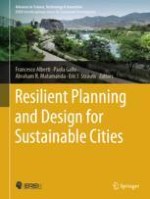2024 | OriginalPaper | Buchkapitel
The Relationship Between Urban Identity and Urban Migration | Investigating a City's Image, Values, and Identity in Kabul City, Afghanistan
verfasst von : Sayed Farhad Alavi, Tomoyuki Tanaka
Erschienen in: Resilient Planning and Design for Sustainable Cities
Verlag: Springer Nature Switzerland
Aktivieren Sie unsere intelligente Suche, um passende Fachinhalte oder Patente zu finden.
Wählen Sie Textabschnitte aus um mit Künstlicher Intelligenz passenden Patente zu finden. powered by
Markieren Sie Textabschnitte, um KI-gestützt weitere passende Inhalte zu finden. powered by
